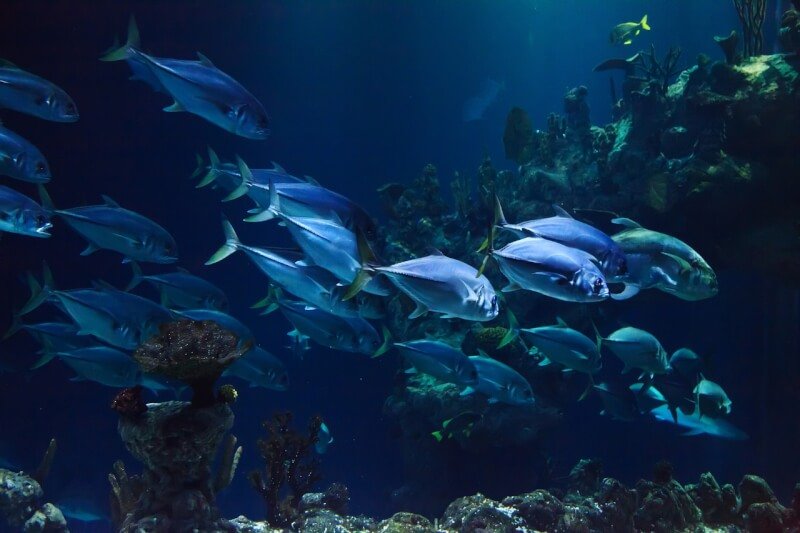Are you looking to create a visually stunning aquarium that will captivate your guests? Look no further than the use of artificial reef structures. These structures not only add depth and dimension to your underwater world but also provide a natural habitat for your fish and other marine life. By enhancing the aesthetics of your aquarium with these innovative structures, you can create a mesmerizing and realistic underwater environment that will leave a lasting impression on anyone who sets eyes on it. Dive into the world of artificial reef structures and unlock the potential of your aquarium. Artificial reef structures offer a range of benefits for aquarium enthusiasts and marine life alike. These structures not only enhance the visual appeal of your aquarium, but also create a natural habitat for marine life, promote biodiversity, and help reduce stress for aquarium inhabitants. In this article, we will explore the different types of artificial reef structures, design considerations, choosing the right materials, installation techniques, creating a balanced arrangement, maintenance and cleaning, compatibility with aquarium inhabitants, the benefits of live coral, and tips for decorating artificial reef structures.
Enhancing visual appeal
One of the primary benefits of incorporating artificial reef structures in your aquarium is the enhancement of visual appeal. These structures add a unique and captivating element to the overall aesthetics of your tank. The addition of rocks, corals, PVC structures, or polyresin structures can create a visually pleasing underwater landscape that mimics the beauty of a natural coral reef. The various colors, textures, and shapes of these artificial structures allow you to create a customized aquarium that suits your personal style and preferences.
Creating a natural habitat for marine life
Artificial reef structures offer a safe and suitable environment for marine life to thrive. By incorporating elements like rocks, corals, and PVC structures, you are providing hiding spots and niches for fish and other inhabitants to seek shelter and establish territories. These structures serve as a haven for a diverse range of species, including fish, invertebrates, and even microorganisms. By replicating the natural habitat of marine organisms, you are giving them a place to call home within your aquarium.
Promoting biodiversity
Artificial reef structures play a crucial role in promoting biodiversity within your aquarium. These structures provide the necessary conditions for a wide variety of marine organisms to coexist. By creating an environment that closely resembles a natural coral reef, you are inviting a diverse range of species to inhabit your tank. The presence of different types of fish, corals, and invertebrates adds a dynamic and vibrant aspect to your aquarium, showcasing the wonders of underwater life.
Reducing stress for aquarium inhabitants
Another significant benefit of artificial reef structures is the reduction of stress for aquarium inhabitants. The addition of hiding spots and niches provides a sense of security for fish and other species, allowing them to retreat from potential aggressors or stressful situations. The presence of these structures also creates a more natural and dynamic environment, which can help alleviate boredom and promote the overall well-being of your aquarium inhabitants. A stress-free environment leads to healthier and happier aquatic life.
Types of Artificial Reef Structures
There are several different types of artificial reef structures that you can consider for your aquarium. Each type offers unique advantages and allows for the creation of specific underwater landscapes. Let’s explore these options in more detail:
Rock-based structures
Rock-based structures are amongst the most popular and versatile choices for artificial reef structures. You can use a combination of live rock, dry rock, or even synthetic rocks to create a visually appealing and functional reef structure. Live rocks are particularly beneficial as they come with a natural colonization of beneficial bacteria and microorganisms. These rocks also provide a sturdy foundation for corals and other marine life to attach and grow upon.
Coral-based structures
Coral-based structures are an excellent choice for adding vibrant color and intricate patterns to your aquarium. Live corals can be carefully placed or attached to artificial rock structures or substrates, creating a stunning underwater garden. By selecting a variety of corals with different growth habits and coloration, you can create a truly mesmerizing display of beauty and diversity within your aquarium.
PVC structures
PVC structures offer a highly customizable option for creating artificial reefs. PVC piping can be cut and arranged in various configurations to mimic the shape and texture of natural corals or underwater formations. These structures can be easily shaped and adjusted to suit the specific needs of your aquarium and its inhabitants. PVC structures are also lightweight, making them easier to deploy and rearrange as desired.
Polyresin structures
Polyresin structures provide an alternative to natural rock or coral-based structures. These synthetic structures are designed to mimic the appearance of real corals, rocks, or other underwater formations. Polyresin structures come in a wide range of shapes, sizes, and colors, allowing you to create a visually stunning and unique display within your aquarium. These structures are durable and non-toxic, ensuring the safety of your aquarium inhabitants.
Design Considerations for Artificial Reef Structures
When designing your artificial reef structures, there are several important considerations to keep in mind. These considerations will help ensure that your reef is not only visually appealing but also provides a suitable environment for your aquarium inhabitants. Let’s explore these design considerations in more detail:
Matching the natural environment
One of the key design considerations when creating artificial reef structures is to match the natural environment of the marine life you wish to house. Research the specific habitat conditions of the species you plan to keep and try to replicate those conditions as closely as possible. Consider factors such as water temperature, pH levels, lighting requirements, and water flow patterns. By recreating the natural environment, you are providing a familiar and comfortable space for your marine inhabitants to thrive.
Creating hiding spots and niches
Incorporating hiding spots and niches within your artificial reef structures is essential for the well-being of your aquarium inhabitants. Many fish and invertebrates require places to retreat and seek refuge when they feel threatened or stressed. Providing nooks, crannies, and caves within your structures allows shy or territorial species to establish their territories and feel secure within the aquarium environment.
Providing vertical and horizontal surfaces
Consider the need for both vertical and horizontal surfaces when designing your artificial reef structures. Different species have varying preferences for the orientation in which they inhabit and explore their environment. By incorporating both types of surfaces, you are accommodating the natural behavior and movement patterns of your aquarium inhabitants. Vertical surfaces such as rocks and corals allow for climbing, while horizontal surfaces such as shelves and ledges provide spaces for perching or resting.
Considering scale and proportion
Maintaining an appropriate scale and proportion is crucial when designing your artificial reef structures. Consider the size of your aquarium and the available space for the structures to ensure that they are not overcrowded or too large for the tank. It’s important to strike a balance between having enough structures to create an interesting display and allowing ample swimming space for your fish. Remember to take into account the eventual growth of the corals and other organisms to prevent overcrowding in the future.
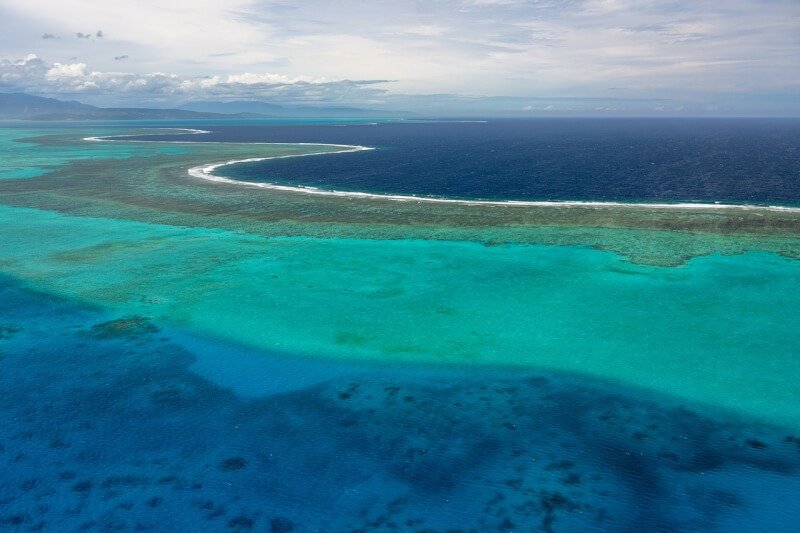
Choosing the Right Materials for Artificial Reef Structures
Selecting the right materials for your artificial reef structures is vital to ensure their durability, safety, and aesthetic appeal. Here are some key considerations when choosing materials:
Durable and non-toxic materials
Opt for materials that are durable and non-toxic to both your aquarium inhabitants and the overall ecosystem. Avoid materials that can leach harmful chemicals into the water, as this can have detrimental effects on the health of your marine life. Natural live rocks or synthetic materials specifically designed for aquarium use are excellent choices. These materials have proven track records in providing a safe and suitable environment for marine organisms.
Materials that mimic natural textures and colors
Choose materials that closely mimic the textures and colors found in natural coral reefs. This not only enhances the visual appeal of your aquarium but also provides a more authentic and harmonious environment for your aquarium inhabitants. Natural live rock, for example, comes with unique textures and colors that can support the growth of beneficial organisms such as coralline algae. Synthetic materials, such as polyresin structures, are often designed to closely resemble real corals and rocks and can offer a lifelike appearance.
Easy to clean and maintain materials
Consider the ease of cleaning and maintaining the materials used in your artificial reef structures. Some materials may be more prone to accumulating debris, algae, or even pests, requiring more frequent cleanings. Opt for materials that are easy to clean and resistant to algae growth. Smooth surfaces that can be easily wiped or brushed clean will help ensure that your artificial reef structures remain visually appealing and free from potential harm to your marine life.
Installation Techniques for Artificial Reef Structures
Proper installation techniques are essential to ensure the stability, safety, and longevity of your artificial reef structures. Consider the following techniques when installing your reef:
Secure placement methods
It is crucial to securely place your artificial reef structures within the aquarium to prevent accidental dislodging or movement. Depending on the type of structures you are using, different placement methods may be required. For example, rock-based structures can be securely wedged or attached to the aquarium floor or back wall using aquarium-safe epoxy or putty. PVC and polyresin structures can be anchored using a combination of reef-safe adhesives and tethering to prevent shifting or toppling over.
Ensuring stability and safety
When installing artificial reef structures, safety should be a top priority. Ensuring that structures are stable and properly supported will help avoid accidents and potential harm to your marine life. Perform stability tests before placing your structures in the aquarium, making sure they can withstand the water movement and any potential disturbances caused by the aquarium’s inhabitants. Regularly check the stability of your structures and reinforce or adjust them as needed.
Avoiding damage to existing aquarium elements
When installing artificial reef structures, it is important to consider the well-being of other elements within your aquarium. Avoid placing structures too close to delicate corals, fish, or invertebrates to prevent damage to their delicate tissues or hinder their growth. Take into account the anticipated growth of your live corals and make adjustments to the placement of structures accordingly to maintain adequate spacing and prevent overcrowding.
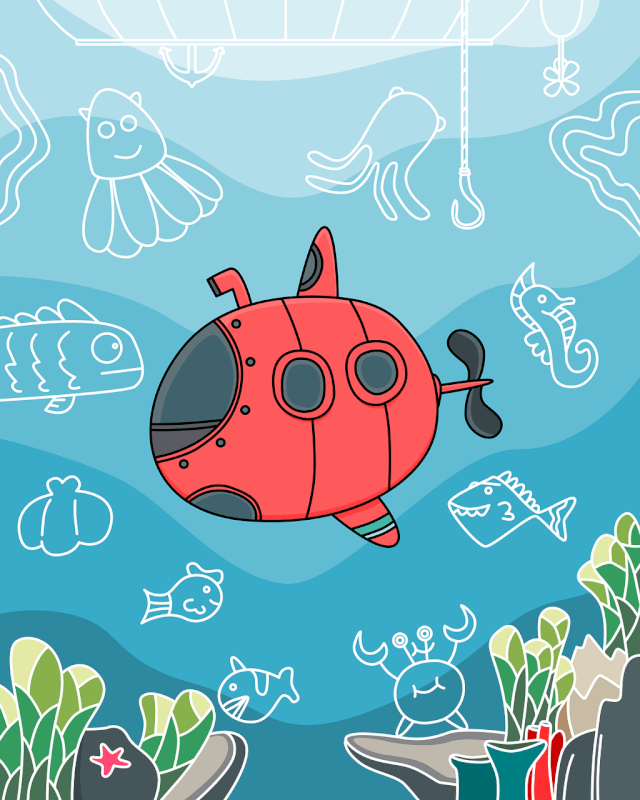
Creating a Balanced and Harmonious Arrangement
Creating a balanced and harmonious arrangement of your artificial reef structures is key to achieving an aesthetically pleasing and functional aquarium. Consider the following factors when arranging your reef:
Considering height and placement
When arranging your reef structures, consider the varying heights of your artificial rocks, corals, or PVC structures. This creates visual interest and depth within your aquarium. Place taller structures towards the back, gradually decreasing in height towards the front, allowing for an unobstructed view of all elements within the tank. Consider the growth potential of corals and other organisms and provide sufficient space for them to expand without overcrowding the aquarium.
Balancing open spaces and structure density
Achieving a balance between open spaces and structure density is essential to create a visually pleasing display. Leaving open spaces within your artificial reef arrangement allows for swimming areas and unrestricted movement for your fish and other aquatic inhabitants. Avoid overcrowding your aquarium with too many structures, as this can make the tank appear cluttered and inhibit the natural behavior of your marine life. Strive for a harmonious balance between the density of structures and the open space available.
Avoiding overcrowding
Overcrowding can lead to stress, aggression, and poor water quality within your aquarium. It is important to avoid overcrowding your tank with too many artificial reef structures, as well as with an excessive number of marine organisms. Take into account the size and eventual growth of each organism and provide sufficient swimming space and hiding spots for each species. By avoiding overcrowding, you are creating a more natural and comfortable environment for your aquarium inhabitants.
Creating focal points
Creating focal points within your artificial reef arrangement adds visual interest and draws attention to specific areas of your aquarium. Utilize larger or more vibrant corals, unique rock formations, or distinct PVC structures to create focal points within your tank. These focal points can showcase the beauty and diversity of your marine life or highlight particular features of your underwater landscape. Focal points not only enhance the visual appeal of your aquarium but also create a sense of depth and dimension.
Maintenance and Cleaning of Artificial Reef Structures
Proper maintenance and regular cleaning of your artificial reef structures are essential for the overall health and appearance of your aquarium. Consider the following tips for maintaining and cleaning your artificial reef structures:
Regular cleaning and inspection
Perform regular cleaning and inspection of your artificial reef structures to remove any accumulated debris, algae, or unwanted pests. Gently brush the surfaces of the structures using soft-bristled brushes or toothbrushes to dislodge any dirt or algae. Avoid using harsh cleaning chemicals that can be harmful to your marine life. Regular inspections allow you to identify any necessary repairs or adjustments to the structures and address them promptly.
Preventing algae growth
Algae can quickly cover your artificial reef structures, compromising their visual appeal and potentially competing with corals or other organisms for space and nutrients. To prevent excessive algae growth, ensure adequate water quality through regular testing and maintenance. Implement proper filtration and nutrient control measures to minimize the likelihood of algae blooms. Additionally, consider introducing herbivorous species such as tangs or snails, which can help control algae growth naturally.
Avoiding damage during cleaning
When cleaning your artificial reef structures, take care to avoid causing unintentional damage. Be gentle when brushing or scrubbing the structures to prevent knocking loose corals or dislodging rocks. Avoid applying excessive pressure or using abrasive materials that can scratch or damage the surfaces. Take note of any delicate or fragile organisms or structures and clean them with extra caution or avoid direct contact altogether.
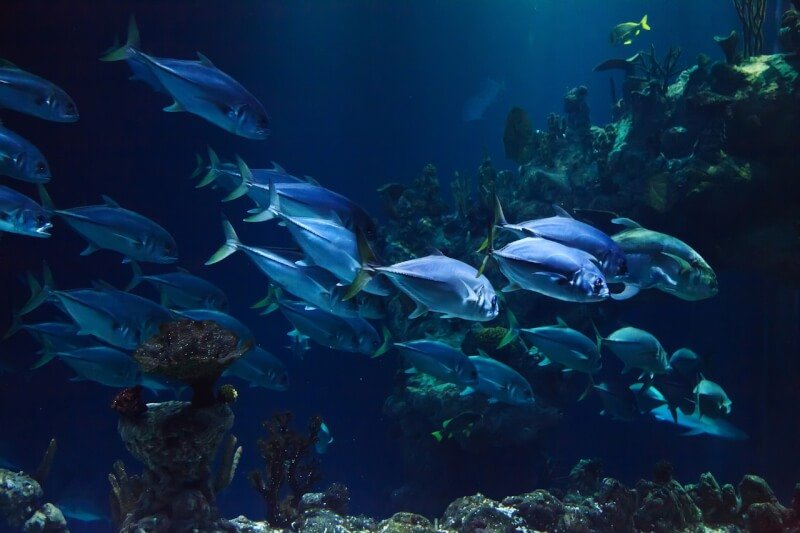
Compatibility with Aquarium Inhabitants
It is important to ensure that your artificial reef structures are compatible with the needs of your aquarium inhabitants. Consider the following factors when selecting and placing your structures:
Matching reef structures with the inhabitants’ needs
Different marine species have varying requirements in terms of swimming space, hiding spots, and territorial boundaries. Research the specific needs of your aquarium inhabitants and select reef structures that can accommodate those needs. For example, certain fish species may require rock structures with multiple hiding spots and niches, while others may prefer open areas for swimming. By providing suitable structures, you can create a harmonious environment that supports the natural behaviors of your marine life.
Considering the behavior and size of the species
Take into account the behavior and size of the species you plan to keep when selecting and arranging your artificial reef structures. Aggressive or territorial species may require additional hiding spots or structures to establish their territories and reduce potential conflicts with other tank mates. Consider the full-grown size of each species and provide adequate space for swimming and growth to prevent overcrowding and territorial disputes.
Providing suitable hiding places for shy species
Some species, particularly shy or nocturnal ones, may require additional hiding places within your artificial reef structures. Incorporate small caves, crevices, or overhangs that can provide a sense of security for these species. By providing suitable hiding spots, you are ensuring that even the most timid inhabitants feel comfortable within the aquarium environment. Observing the natural behaviors of your marine life will help you adjust the arrangement of your structures to better suit their needs.
Benefits of Live Coral in Artificial Reef Structures
Incorporating live coral in your artificial reef structures offers several benefits for your aquarium. Let’s explore these advantages:
Enhancing natural aesthetics
Live corals add a natural and captivating beauty to your artificial reef structures. The vibrant colors, intricate textures, and unique growth forms of live corals create a visually stunning underwater landscape within your aquarium. By incorporating live coral, you can achieve a more authentic and realistic representation of a natural coral reef, further enhancing the visual appeal of your tank.
Promoting coral growth and health
Live coral, as opposed to synthetic or artificial corals, provides a live habitat for coral polyps and other beneficial organisms. By mimicking the natural environment of live corals, you are creating optimal conditions for coral growth and health. Live corals require appropriate lighting, water flow, and water chemistry to thrive. Proper care and maintenance, such as regular water testing, supplementation, and adequate nutrient control, will contribute to the overall well-being and longevity of your live corals.
Supporting symbiotic relationships
Live coral colonies foster a variety of symbiotic relationships within your aquarium. Corals, for example, can form mutualistic partnerships with zooxanthellae algae, where the algae provide nutrients through photosynthesis while receiving shelter and protection from the corals. These symbiotic relationships contribute to the overall health and stability of your aquarium ecosystem. By incorporating live coral, you are nurturing these beneficial relationships and promoting the ecological balance within your tank.
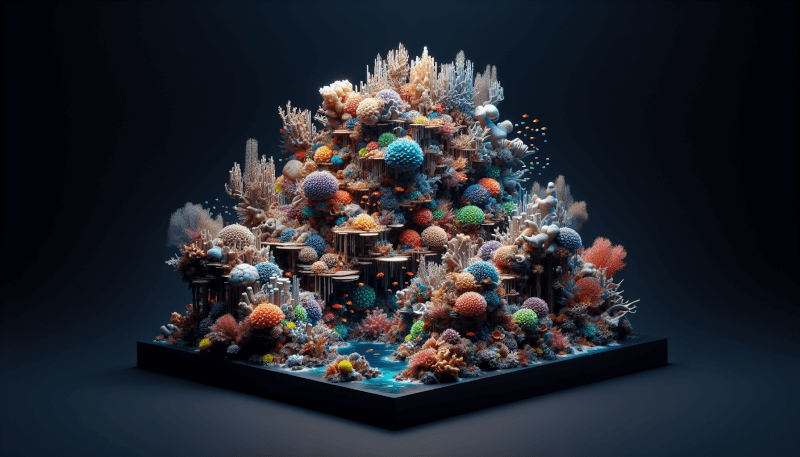
Tips for Decorating Artificial Reef Structures
When decorating your artificial reef structures, consider adding additional elements to enhance the overall aesthetics and functionality of your aquarium. Here are some tips for decorating your reef:
Adding natural elements like shells and driftwood
Incorporating natural elements such as seashells, driftwood, or pieces of coral skeletons can add an extra layer of authenticity to your artificial reef structures. These elements help create a more natural-looking environment, as they are commonly found in the natural habitats of marine life. Arrange these elements strategically amongst your reef structures to provide interest and visual variety.
Using artificial plants for additional greenery
Artificial plants can be used to add color and greenery to your artificial reef structures. Choose artificial plants that closely resemble real aquatic plants to create a visually appealing and natural-looking effect. These plants can provide hiding spots and resting places for your fish and invertebrates, while also contributing to the overall aesthetics of your aquarium.
Creating visual depth with different textures and heights
Incorporating structures with different textures and heights can create visual depth within your aquarium. Consider using artificial corals or rocks with varying shapes, colors, and textures to create contrast and visual interest. Arrange taller structures towards the back and gradually decrease in height towards the front to create an illusion of depth. This arrangement adds depth and dimension to your aquarium, making it visually captivating and engaging.
By following these guidelines for artificial reef structures, you can enhance the aesthetics of your aquarium, create a natural habitat for marine life, promote biodiversity, reduce stress for aquarium inhabitants, and add a beautiful focal point to your home or office. With careful consideration of design, materials, installation techniques, and maintenance, you can create a captivating underwater world that provides joy and fascination for both you and your aquarium inhabitants.

